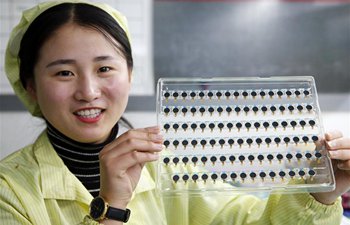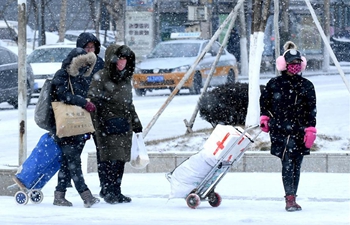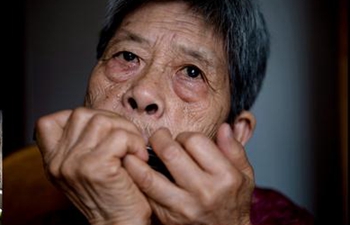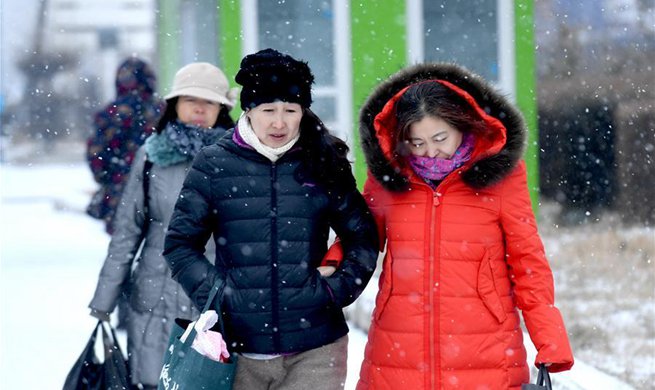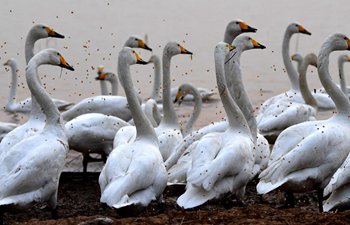CHICAGO, Dec. 8 (Xinhua) -- Researchers at Washington University School of Medicine in St. Louis have identified brain networks involved in a baby's learning to walk, a discovery that eventually may help predict whether some infants are at risk for autism.
The study has been newly published online in the journal Cerebral Cortex.
In brain scans and motor skills evaluations of nearly 200 babies, the researchers unexpectedly found that part of a brain network that operates in adults when the brain seems to be doing nothing is involved in learning to walk and control motor functions. This network, called the default-mode network, is active during sleep and daydreaming and when a person is thinking about one' s self and one's environment, including that individual' s social ability.
Previous research has shown that people with Alzheimer's disease and autism often have disruptions in the default-mode network.
"Walking is a huge gross motor milestone, and it's associated with a child's understanding of his or her own body in relation to the environment," said first author Natasha Marrus, an assistant professor of child psychiatry at Washington University in St. Louis. "That the default-mode network is involved is important because that network is thought to be very involved in developing one's own sense of self. Our findings may allow us to identify the brain regions and networks that can predict aspects of autism before it' s possible to make a clinical diagnosis."
Marrus and colleagues performed functional brain scans on 187 young children while they were sleeping. They scanned the children near their first birthdays and again about a year later and evaluated gross motor skills at those same times.
Some toddlers in the study had an elevated risk for autism because they have siblings with an autism diagnosis. Autism spectrum disorder is, in part, a genetic condition that runs in families. In the general population, about one in 68 children is affected, but the odds rise to one in five when a sibling has an autism diagnosis.
The researchers found that between a child's first and second birthdays, brain networks linked to walking change. At 12 months, stronger connections between the brain's motor and default-mode networks were associated with better walking and gross motor skills. By 24 months, brain networks linked to attention and task control also had become engaged in walking and gross motor skills.
"When a child first learns to walk, a big breakthrough involves just putting one foot in front of the other and learning to control one's limbs," Marrus said. "As walking improves, it's possible the child may begin to think, 'Where, exactly, do I want to put my foot?' Or, 'Do I need to adjust my position?' And by becoming more or less active, the default-mode network, along with other networks, may help process that information."
It's possible that the brains of children who go on to develop autism are not as adept at making those network connections and processing that data, the researchers said.
"Understanding relationships between these networks may be important for understanding the brain differences associated with autism," said John R. Pruett, an associate professor of child psychiatry at Washington University in St. Louis. "In future studies, we want to identify differences between brain network connections in children who develop autism and those who don't and see how they affect landmark motor behaviors, such as walking."




